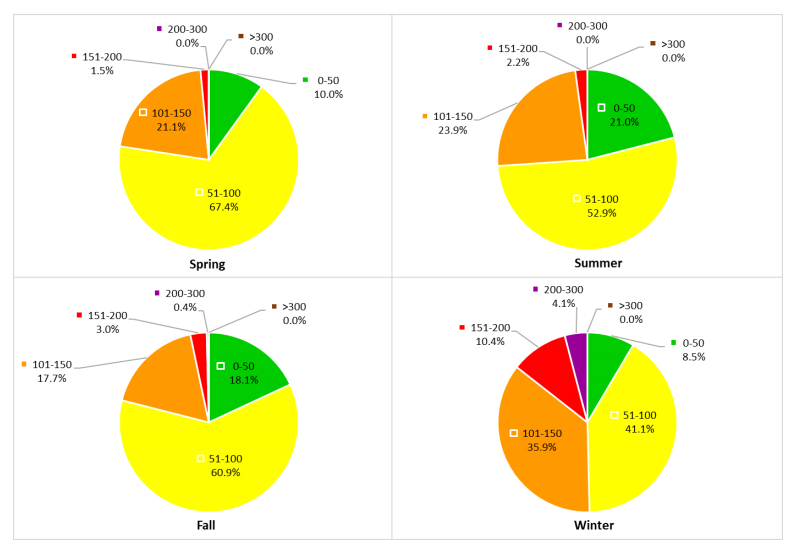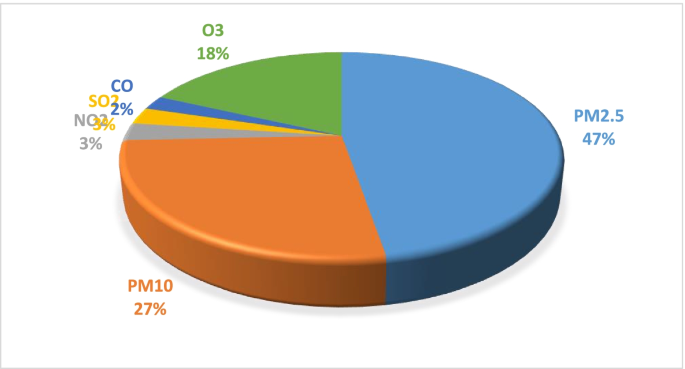The Ambient Air Quality Index (AQI) is a critical tool for assessing and communicating air quality to the public. It provides valuable information about the level of air pollution and its potential health effects. Understanding how the AQI works is essential for individuals, communities, and policymakers to make informed decisions about outdoor activities and pollution control measures. In this article, we will delve into the mechanics of the Ambient Air Quality Index and how it helps us gauge air quality.

What is the Ambient Air Quality Index (AQI)?
The AQI is a standardized scale used to represent the concentration of key air pollutants in the atmosphere and their potential impact on human health. It provides a single, easy-to-understand number that summarizes the overall air quality at a specific location.
Components of the AQI
The AQI is typically calculated based on the concentrations of five major air pollutants:
- Ground-level Ozone (O3): Ozone is a reactive gas that can cause respiratory problems, especially on hot and sunny days. It is a primary component of smog.
- Particulate Matter (PM2.5 and PM10): These are tiny particles or droplets in the air that can be inhaled into the lungs. PM can contain harmful chemicals and can cause respiratory and cardiovascular problems.
- Carbon Monoxide (CO): CO is a colorless, odorless gas produced by the incomplete combustion of carbon-containing fuels. High levels of CO can lead to headaches, dizziness, and impaired cognitive function.
- Sulfur Dioxide (SO2): SO2 is a pungent gas produced by burning fossil fuels containing sulfur. It can irritate the respiratory system and contribute to acid rain.
- Nitrogen Dioxide (NO2): NO2 is a reddish-brown gas that can irritate the respiratory system and contribute to the formation of ground-level ozone.
AQI Categories
The AQI scale is divided into several categories, each representing a different level of health concern. These categories help the public understand the potential risks associated with the current air quality. The standard AQI categories are as follows:
- 0-50: Good (Green) – Air quality is satisfactory, posing little or no risk to health.
- 51-100: Moderate (Yellow) – Air quality is acceptable; however, there may be a concern for some people who are unusually sensitive to air pollution.
- 101-150: Unhealthy for Sensitive Groups (Orange) – Members of sensitive groups, such as children, the elderly, and individuals with respiratory or heart conditions, may experience health effects. The general public is not likely to be affected.
- 151-200: Unhealthy (Red) – Everyone may begin to experience health effects, and members of sensitive groups may experience more serious health effects.
- 201-300: Very Unhealthy (Purple) – Health alert: everyone may experience more serious health effects.
- 301-500: Hazardous (Maroon) – Health warnings of emergency conditions. The entire population is more likely to be affected.

Calculating the AQI
The AQI is calculated based on the concentration of each of the five major pollutants mentioned earlier. For each pollutant, a sub-index is calculated, representing the relative level of risk associated with that pollutant. The highest sub-index is then selected as the overall AQI value for that location. The formula for calculating the AQI can be quite complex, involving different breakpoints, concentrations, and weighting factors for each pollutant.
Conclusion
The Ambient Air Quality Index is a valuable tool for assessing air quality and understanding its potential health implications. By providing a simple numerical scale and color-coded categories, it enables the public to make informed decisions about outdoor activities and helps policymakers implement pollution control measures when needed. Monitoring and reporting air quality through the AQI contribute to healthier communities and a better understanding of the impact of air pollution on our daily lives.
Remember that staying informed about the AQI in your area and taking appropriate precautions can help protect your health and the health of your community, especially during periods of poor air quality.
Frequently Asked Questions
Is the AQI the same worldwide?
The AQI can vary from one country to another, as different regions may have their own air quality standards and calculations. However, efforts are made to standardize the AQI to make it comparable internationally.
How can individuals check the AQI in their area?
Many governments and environmental agencies provide real-time AQI data online or through mobile apps. Additionally, local news and weather services often report the AQI as part of their broadcasts.
What precautions should individuals take during poor air quality days?
During days with high AQI values, individuals, especially those in sensitive groups, should consider reducing outdoor activities, staying indoors, using air purifiers, and following any health advisories issued by authorities.
Can the AQI change throughout the day?
Yes, the AQI can change as pollutant levels fluctuate due to weather conditions, traffic patterns, and industrial activities. It is important to check the AQI regularly, especially on days with changing weather.
Author Bio
Mr. Parthiv Kinariwala is a leading expert in calibration and testing services, with over 20 years of experience in the industry. As the founder of Prism Calibration, established in 2004, Mr. Kinariwala has been at the forefront of delivering precise and reliable calibration, testing, and validation solutions across various industries. His expertise in providing services that meet international calibration standards has earned the trust of major clients, including Reliance Industries, Zydus Cadila, Indian Oil, ONGC, Adani, and Tata.
With a deep understanding of instrumentation, measurement accuracy, and industrial testing, Mr. Kinariwala ensures that each client receives exceptional service tailored to their specific needs. His unwavering commitment to quality and precision has established Prism Calibration as a trusted partner for some of the largest and most respected organizations in the industry.







